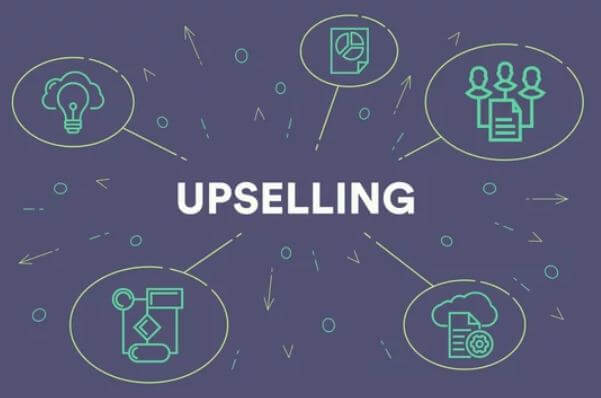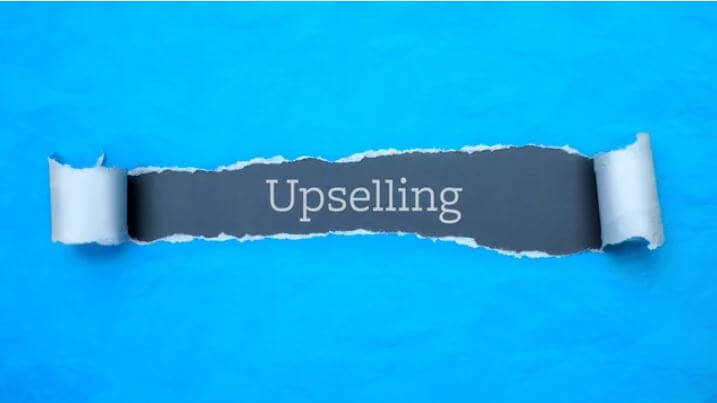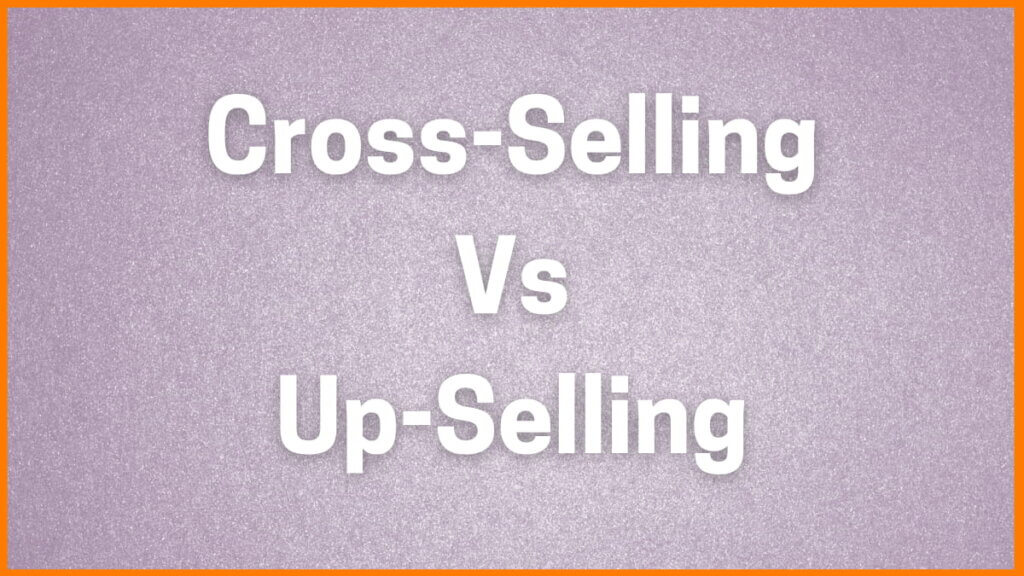Upselling
Introduction to Upselling
Upselling is a sales technique that involves convincing customers to purchase a higher-end or more expensive version of a product or add-ons that complement their original purchase. It’s a strategy businesses use to increase sales revenue, improve customer satisfaction and loyalty, and create a more personalized shopping experience.
Importance of Upselling
Upselling is essential to the growth and success of businesses of all sizes. It’s a cost-effective way to increase revenue and profitability, as selling to existing customers is more accessible and less expensive than acquiring new ones. According to research, businesses implementing upselling techniques see an average of 10-30% increase in sales revenue. Upselling is also an effective way to build customer relationships, improve customer satisfaction and loyalty, and differentiate your business from competitors.
Benefits of Upselling
- Increase sales revenue: Businesses can increase their average transaction value and overall sales revenue by upselling.
- Improve customer satisfaction and loyalty: By offering personalized recommendations and anticipating customer needs, businesses can provide a more satisfying shopping experience, leading to increased loyalty and repeat business.
- Differentiate from competitors: Upselling can help businesses differentiate by offering unique and valuable products or services.
Effective Upselling Techniques
Upselling can be a highly effective sales upselling strategy when executed correctly. The key is understanding your customer’s needs, providing personalized recommendations, and offering compelling product options. Here are some of the most effective techniques for upselling:
Understanding Customer Needs
To effectively upsell, businesses must first understand their customers’ needs. This requires careful observation and active listening. Here are some ways to identify customer needs:
Identifying Customer Needs
Start by asking open-ended questions and encouraging customers to share their goals, preferences, and concerns. This can help you better understand what the customer is looking for and how you can help them find it. Some practical questions to ask include:
- What brings you to our store today?
- What are you hoping to achieve with your purchase?
- Do you have any specific preferences or concerns?
Matching Products with Customer Needs
Once you have identified the customer’s needs, the next step is to recommend products or services that will meet those needs. This requires a thorough understanding of your product offerings and how they can benefit the customer. Some effective strategies include:
- Highlighting the benefits of the product or service: Explain how the product or service will meet the customer’s needs and provide additional value.
- Recommending complementary products: Offer add-ons or upgrades that enhance the customer’s experience and make their purchase more valuable.
- Creating product bundles: Package related products together to provide a complete solution for the customer’s needs.
Providing Add-Ons
Offering add-ons is another effective upselling technique. Add-ons are additional upselling products or services that complement the customer’s purchase. They can enhance the customer’s experience, improve the product’s functionality, or provide additional value. Here are some practical ways to offer add-ons:
- Demonstrate how the add-on will enhance the customer’s experience: Show the customer how it works and explain its benefits.
- Offer the add-on at a discounted price: Provide a discount when the customer purchases the add-on with their original purchase.
- Make the add-on easy to purchase: Place it near the original product or offer it during checkout.
Offering Discounts
Discounts can be a powerful motivator for customers to make a purchase. Offering a discount can help convince customers to upgrade to a higher-end product or purchase an additional item. Here are some practical ways to offer discounts:
- Offer a percentage off the total purchase price: When the customer makes a qualifying purchase, provide a portion of the total purchase price.
- Offer a dollar amount off the original price: Provide a dollar amount discount when the customer makes a qualifying purchase.
- Offer a buy-one-get-one deal: Provide a free or discounted item when the customer purchases a specific product.
Suggestive Selling
Suggestive selling involves recommending products or services the customer may not have considered. This can help expand the customer’s options and provide additional value. Here are some practical ways to suggestively sell:
- Use social proof: Highlight popular or highly-rated products to help guide the customer’s decision-making process.
- Use scarcity tactics: Encourage the customer to purchase by emphasizing the limited availability of a product or offer.
- Use urgency tactics: Encourage the customer to purchase by emphasizing the limited time frame of a product or offer.
Strategies for Successful Upselling
Upselling is a sales technique that involves convincing customers to purchase a higher-end or more expensive version of a product or add-ons that complement their original purchase. It’s a strategy businesses use to increase sales revenue, improve customer satisfaction and loyalty, and create a more personalized shopping experience. Here are some methods for successful upselling:
Focus on Customer Needs
The key to successful upselling is to focus on customer needs. You need to understand what the customer is looking for and how you can help them find it. You can gain valuable insights into their needs and preferences by asking open-ended questions and actively listening to the customer’s responses; this will allow you to recommend products or services that meet those needs and provide additional value.
Highlight the Benefits
When recommending a higher-end product or add-on, it’s essential to highlight the benefits. Explain how the product or service will meet the customer’s needs and provide additional value. This will help the customer see the value in the higher-end product and make it more likely that they will make the purchase.
Offer Add-Ons
Offering add-ons is another effective upselling technique. Add-ons are additional products or services that complement the customer’s original purchase. They can enhance the customer’s experience, improve the product’s functionality, or provide additional value. When offering add-ons, it’s essential to demonstrate how the add-on will enhance the customer’s experience and explain its benefits.
Provide Discounts
Discounts can be a powerful motivator for customers to make a purchase. Offering a discount can help convince customers to upgrade to a higher-end product or purchase an additional item. When submitting a discount, it’s essential to make the offer compelling and communicate the savings that the customer will receive.
Create Product Bundles
Creating product bundles is another effective upselling technique. Bundles are packages of related products or services that provide a complete solution for the customer’s needs. By bundling products together, you can offer a finished explanation and create additional value for the customer. When creating product bundles, it’s essential to make the offer compelling and communicate its benefits.
Suggestive Selling
Suggestive selling involves recommending products or services the customer may not have considered. This can help expand the customer’s options and provide additional value. When suggestive selling, it’s essential to use social proof, scarcity tactics, and urgency tactics to encourage the customer to purchase.
Provide Personalized Recommendations
Providing personalized recommendations is another effective upselling technique. By understanding the customer’s needs and preferences, you can offer suggestions tailored to their species. This will help the customer see the value in the product or service and make it more likely that they will make the purchase.
Potential Challenges of Upselling
While upselling can be a highly effective sales strategy, there are potential challenges that businesses may face when implementing this technique. Here are some potential challenges of upselling and how to overcome them:
Pushy Sales Tactics
One of the biggest challenges with upselling is the perception of pushy sales tactics. Customers may feel pressured or manipulated into making a purchase they don’t need or want. This can lead to a negative shopping experience and damage the business’s reputation.
Focusing on customer needs and providing genuinely helpful and relevant recommendations is essential to overcome this challenge. Avoid high-pressure sales tactics and provide information and options that the customer can consider.
Misaligned Recommendations
Another challenge with upselling is when the recommended products or services don’t align with the customer’s needs or preferences. This can lead to frustration and confusion on the part of the customer and can damage their trust in the business.
To overcome this challenge, it’s essential to actively listen to the customer and ask questions to understand their needs and preferences. This will help you provide recommendations tailored to their specific situation and increase the likelihood of a successful upsell.
Overpricing
One of the biggest turn-offs for customers is overpricing. Customers may feel that they are being charged too much for a product or service, which can lead to a negative shopping experience and decrease the likelihood of future purchases.
To overcome this challenge, providing clear and transparent pricing information is essential. Avoid marking up prices excessively and offer discounts or promotions to make the higher-end product or service more attractive to the customer.
Ineffective Training
Effective upselling requires training and support for sales staff. Without proper training, sales staff may struggle to upsell effectively and miss opportunities to increase revenue and improve customer satisfaction.
To overcome this challenge, businesses should invest in training programs that give sales staff the knowledge, skills, and confidence to upsell successfully. This training should focus on understanding customer needs, highlighting the benefits of higher-end products and add-ons, and effective communication and sales techniques.
Unmet Expectations
When customers make a higher-end purchase or add-on, they may have certain expectations about the product or service. If these expectations are not met, it can lead to dissatisfaction and a negative shopping experience.
To overcome this challenge, it’s essential to set clear expectations with the customer about what they can expect from the product or service. Provide information about features, benefits, and limitations, and be transparent about potential risks or downsides.
Conclusion
Upselling is a powerful sales strategy that can help businesses increase revenue, improve customer satisfaction, and build brand loyalty. By offering higher-end products or add-ons that complement the customer’s purchase, companies can provide additional value and enhance the overall shopping experience.
To be successful with upselling, businesses should focus on understanding customer needs and preferences, providing helpful and relevant recommendations, and avoiding pushy sales tactics. It’s also essential to provide clear and transparent pricing information, invest in good training programs for sales staff, and set clear expectations with customers about what they can expect from the product or service.
While there are potential challenges with upselling, such as misaligned recommendations, overpricing, and unmet expectations, these can be overcome through effective communication and customer-focused strategies.
Ultimately, upselling is about creating a positive shopping experience for the customer and providing them with products and services that meet their needs and preferences. Effective upselling techniques and strategies can increase revenue, improve customer satisfaction, and build a loyal customer base.
F.A.Q
What is the difference between cross-selling and upselling?
Cross-selling and upselling are techniques to increase revenue by encouraging customers to purchase additional products or services. The main difference between cross-selling and upselling is focusing on the other product or service.
Cross-selling involves offering customers complementary products or services related to their initial purchase. For example, if a customer purchases a laptop, a salesperson may offer them a printer or a laptop case as a cross-sell. The focus is on providing a related product or service that complements the customer’s initial purchase.
Upselling, however, involves encouraging customers to purchase a higher-end or more expensive version of the product they are considering. For example, if a customer is looking at a basic smartphone model, a salesperson may recommend a more expensive model with additional features and benefits as an upsell. The focus is encouraging customers to purchase a more premium version of their desired product.
While both cross-selling and upselling can be effective ways to increase revenue and improve customer satisfaction by offering customers additional value and enhancing their overall shopping experience, the main difference lies in the focus of the other product or service being presented.
What is better, upselling or down selling?
Whether upselling or down selling is better depends on the specific circumstances and goals of the business.
Upselling can benefit businesses looking to increase their average order value and generate more revenue. By encouraging customers to purchase a higher-end or more expensive version of the product they are considering, businesses can increase their profit margin and potentially create a more loyal customer base.
On the other hand, down selling can benefit businesses looking to retain customers and prevent them from leaving without making a purchase. By offering customers a lower-priced or alternative product when their initial choice is unavailable or too expensive, businesses can still generate some revenue and potentially create a positive customer experience that leads to future purchases.
Ultimately, the decision to use upselling or down selling strategies should be based on the specific circumstances and goals of the business, as well as the customer’s needs and preferences. A customer-focused approach that prioritizes providing value and enhancing the overall shopping experience is critical to the success of both strategies.
What are upselling and cross-selling techniques?
Upselling and cross-selling are sales techniques that increase revenue by encouraging customers to purchase additional products or services.
Upselling techniques involve encouraging customers to purchase a higher-end or more expensive version of the product they are considering. Some effective upselling methods include:
- Himethods the additional benefits and features of the higher-end product
- Offering a limited-time discount or special promotion for the higher-end product
- Suggesting complementary products or services that enhance the value of the higher-end product
- Providing social proof or testimonials from other satisfied customers who have purchased the higher-end product
On the other hand, cross-selling techniques involve offering customers complementary products or services related to their initial purchase. Some effective cross-selling methods include:
- Remethods products or services that enhance the value of the customer’s initial purchase
- Highlighting the benefits and features of the complementary product or service
- Offering a bundled package deal that includes the initial development and complement-development duct or service
- Using personalized product recommendations based on the customer’s purchase history and preferences
Both upselling and cross-selling techniques can be effective ways to increase revenue and improve customer satisfaction by offering customers additional value and enhancing their overall shopping experience. However, using these techniques in a customer-focused and non-pushy manner is essential to avoid damaging the business’s reputation and driving away potential customers.
What are examples of upselling and cross-selling?
Examples of upselling and cross-selling include:
Upselling:
- A customer is interested in buying a basic smartphone. The salesperson recommends a more expensive model with additional features and benefits.
- A customer is looking at a standard hotel room. The hotel staff suggests a more luxurious room with a better view and more amenities.
- A customer is considering purchasing a basic gym membership. The gym staff recommends a premium membership with access to additional classes and amenities.
Cross-selling:
- A customer purchases a laptop. The salesperson suggests a printer or a laptop case as a complementary product.
- A customer purchases a pair of shoes. The salesperson suggests a pair of socks or a shoe-cleaning kit as a complementary product.
- A customer purchases a camera. The salesperson suggests a memory card or a camera bag as a complementary product.
Both upselling and cross-selling techniques aim to increase revenue and enhance the customer’s overall shopping experience by offering additional value and complementary products or services. However, using these techniques in a customer-focused and non-pushy manner is essential to avoid damaging the business’s reputation and driving away potential customers.






